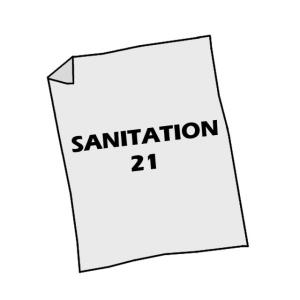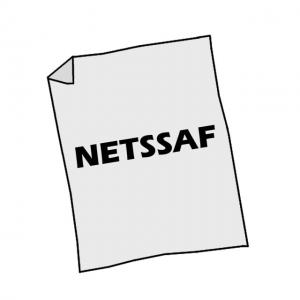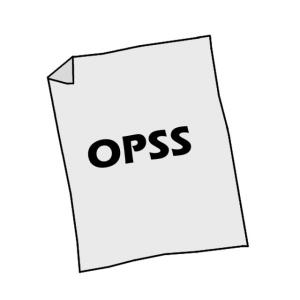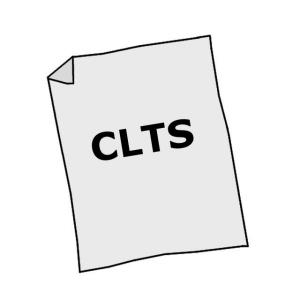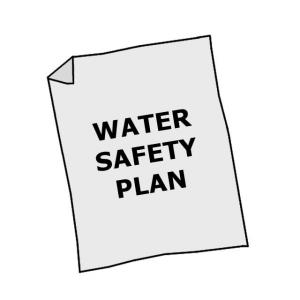This technology consists of two alternating pits connected to a pour flush toilet. The blackwater (and in some cases greywater) is collected in the pits and allowed to slowly infiltrate into the surrounding soil. Over time, the solids are sufficiently dewatered and can be manually removed with a shovel.
| In | Out |
|---|---|
| Brownwater, Blackwater, Faecal Sludge |
Compost/Biosolids |
The twin pits for pour flush technology can be designed in various ways; the toilet can be located directly over the pits or at a distance from them. The superstructure can be permanently constructed over both pits or it can move from side to side depending on which one is in use. No matter how the system is designed, only one pit is used at a time. While one pit is filling, the other full pit is resting.
As liquid leaches from the pit and migrates through the unsaturated soil matrix, pathogenic germs are sorbed onto the soil surface. In this way, pathogens can be removed prior to contact with groundwater. The degree of removal varies with soil type, distance travelled, moisture and other environmental factors.
The difference between this technology and the double VIP or Fossa Alterna is that it allows for water and it is not necessary to add soil or organic material to the pits. As this is a water-based (wet) technology, the full pits require a longer retention time (two years is recommended) to degrade the material before it can be excavated safely.
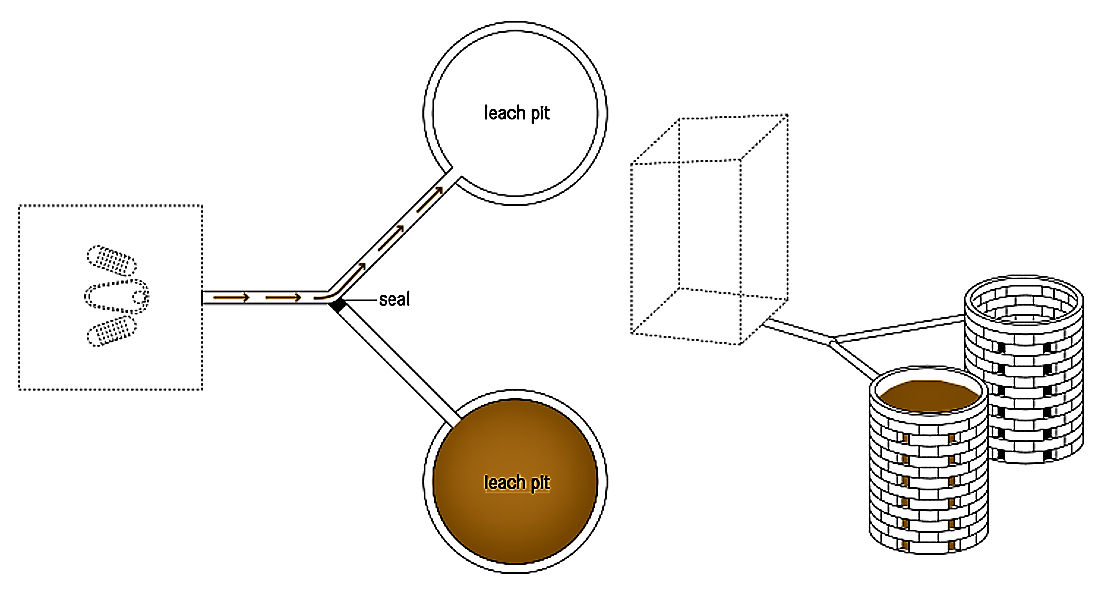
The pits should be of an adequate size to accommodate a volume of waste generated over one or two years. This allows the contents of the full pit enough time to transform into a partially sanitized, soil-like material that can be manually excavated..
It is recommended that the twin pits be constructed 1 m apart from each other to minimize cross-contamination between the maturing pit and the one in use. It is also recommended that the pits be constructed over 1 m from any structural foundation as leachate can negatively impact structural supports. Water within the pit can impact its stability. Therefore, the full depth of the pit walls should be lined to prevent collapse and the top 30 cm should be fully mortared to prevent direct infiltration and to support the superstructure.
There is a risk of groundwater pollution when pits are located in areas with a high or variable water table, and/or fissures or cracks in the bedrock. As soil and groundwater properties are often unknown, it is difficult to estimate the distance necessary between a pit and a water source. It is normally recommended to have a minimum horizontal distance of 30 m between them to limit exposing the water source to microbial contamination.
To ensure that only one of the two pits is used at any time, the idle pipe of the junction connecting to the out-of-use pit should be closed (e.g. with cement or bricks). Alternatively, the pour flush toilet could also be directly connected to the pit in use by a single straight pipe fixed in place with light mortar and covered with earth. The risk of failure and misuse is minimized by ensuring that the junction and pipes are not easily accessible.
It is a commonly accepted sanitation option; however, some health concerns exist:
- Leachate can contaminate groundwater;
- Stagnant water in pits may promote insect breeding;
- Pits are susceptible to failure and/or overflowing during floods.
The pits must be regularly emptied (after the recommended two year resting time), and care must be taken to ensure that they do not flood during rainy seasons. Emptying is done manually using long handled shovels and proper personal protection.
Twin pits for pour flush are a permanent technology appropriate for areas where it is not possible to continuously build new pit latrines. As long as water is available, this technology is appropriate for almost every type of housing density. However, too many wet pits in a small area is not recommended as the soil matrix may not be of sufficient capacity to absorb all the liquid and the ground could become water-logged (oversaturated). In order for the pits to drain properly, the soil must have a good absorptive capacity; clay, tightly packed or rocky soils are not appropriate. This technology is not suitable for areas with a high groundwater table or where there is frequent flooding.
Greywater can be co-managed along with the blackwater in the twin pits, especially if the greywater quantities are relatively small, and no other management system is in place to control it. However, large quantities of flushwater and/or greywater may result in excessive leaching from the pit and possibly groundwater contamination. .
The dewatered, solid material is manually emptied from the pits (it is dug, not pumped out), therefore, space is not required for vacuum trucks to access them.
A Guide to the Development of On-site Sanitation
The publication presents appropriate technologies for sanitation and highlights socio-economic aspects of planning and implementing. Emphasis is given to household-level sanitation improvements for urban areas, as well as rural areas and small communities. Background information on sanitation, in-depth technical information on the design, construction, operation and maintenance and project planning and development processes involved in projects and programmes complement the book.
WHO (1992): A Guide to the Development of On-site Sanitation. Geneva: World Health Organisation (WHO) URL [Accessed: 14.04.2010]The Design of Pour-Flush Latrines
The technical note was produced as a joint United Nations Development Programme and World Bank contribution to the International Drinking Water Supply and Sanitation Decade. It sets out guidelines for the design of pour-flush latrines, based upon TAG's (Technology Advisory Group) experience in India, Brazil and elsewhere. These guidelines have been written especially for use in developing countries. Consequently, emphasis has been placed on achieving simplicity of design consistent with reliability of operation.
MARA, D.D. (1985): The Design of Pour-Flush Latrines. (= TAG Technical Note No. 15 ). United Nations Development Programme (UNDP) and World Bank URL [Accessed: 02.08.2010]Low-cost Urban Sanitation
This book covers the public health, technical, socioeconomic, sociocultural and institutional aspects of sanitation in towns and cities of developing countries. The text features excreta-related diseases and the use of sanitation to reduce their transmission. The sanitation technologies covered in detail are VIP latrines, pour-flush toilets, septic tanks, settled sewerage and simplified sewerage, with additional chapters on sullage disposal, pit emptying, and sewage treatment and reuse. Sociocultural constraints on sanitation systems and their socioeconomic costing are described, together with hygiene education, which is essential in order to achieve maximum benefits to health. The text also explains how to choose the most appropriate sanitation option for a given low-income community. Finally, institutional aspects are reviewed, including effective sanitation programme planning, monitoring and evaluation.
MARA, D. (1996): Low-cost Urban Sanitation. United Kingdom: WileyManual on the design, construction and maintenance of low-cost pour-flush water seal latrines in India
This manual has been prepared for agencies, contractors and individuals involved in various aspects of the low-cost pour-flush water seal latrine programme in India. The inherent principles are, however, of general application; with minor modifications, the technical details can be readily adapted to meet the needs of different areas, particularly where water is used for anal cleansing. The manual presents salient features in regards to design, construction and maintenance as well as the administration of low-cost pour-flush water seal latrines with offset twin pits. It contains extensive drawings, tables of quantities for construction materials used for different designs as well as standard forms for by-laws and for general information on project administration and supervision.
ROY, A.K. CHATTERJEE, P.K. GUPTA, K.N. KHARE, S.T. RAU, B.B. SINGH, R.S. (1984): Manual on the design, construction and maintenance of low-cost pour-flush water seal latrines in India. (= TAG technical note; no. 10 ). United Nations Development Programme (UNDP) and World Bank URL [Accessed: 01.06.2010]


